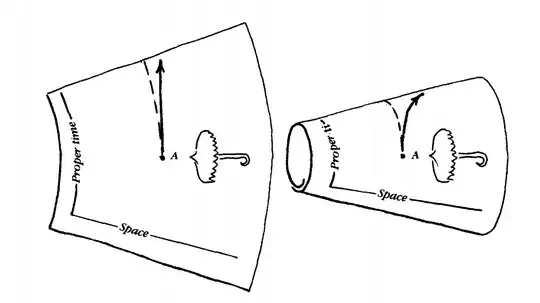In multiple explanations of general relativity, the curvature of a cone has been used to explain why objects fall in a gravitational field, like so:
It also appears in videos like this and this one from Vsauce.
I am looking for a mathematical description of this conical spacetime. Obviously, the cone describes a flat spacetime, which is to be expected from a uniform gravitational field on the surface of the Earth.
However, I'm struggling to write the metric, because the Euclidean line element for the cone would be:
$$ds^2=dr^2+r^2 d\theta^2$$
I'm not sure if this is the correct metric if time is involved.
I would like to show intuitively that the coordinate acceleration of the falling object is simply due to the choice of coordinates and the corresponding Christoffel symbols.
Also, why does this conical shape correspond physically to a uniform gravitational field? Are there any physical arguments that lead to this shape?
If possible, I'm wondering if there is any link to accelerated frames of reference. For example, does the cone have any connection to Rindler coordinates? I would think that this conical spacetime is an accelerated frame of reference since the surface of the Earth is stationary in these coordinates.
